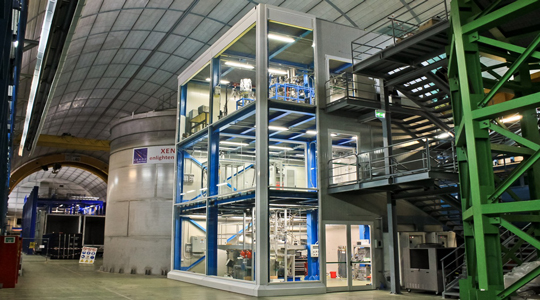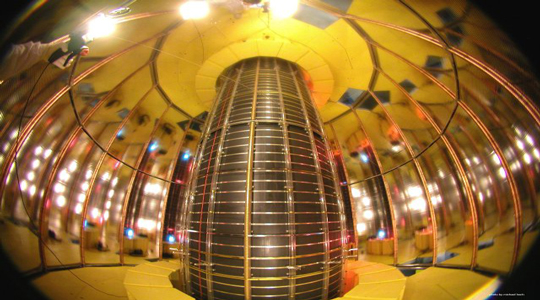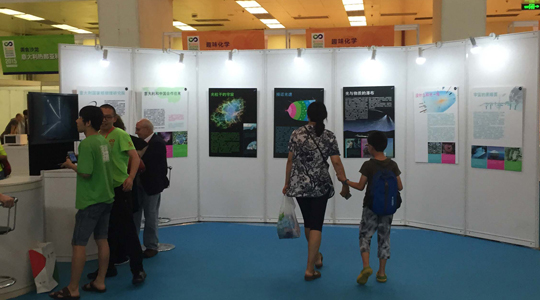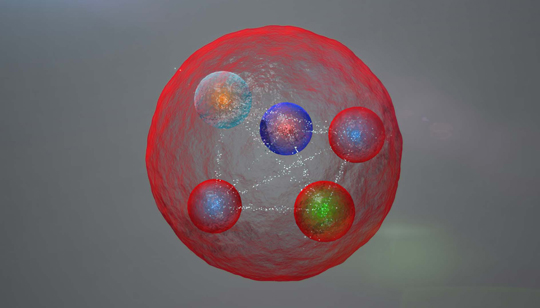 Only news version available in english – There is new evidence of an excess of antimatter particles within the cosmic ray flux. The data were obtained by the Alpha Magnetic Spectrometer (AMS), also known as the Hubble for elementary particles, mounted on the International Space Station (ISS) in 2011. The latest data obtained by the AMS were presented at CERN during the three-day “AMS Days at CERN” event. The AMS experiment, in which Italy is taking part through the Italian Institute for Nuclear Physics (INFN) and the Italian Space Agency (ASI), has re-measured the ratio of antiprotons to protons within the cosmic ray flux and for the first time has observed an unexpected excess of antiprotons. The new findings supplement those of the flux of antielectrons (positrons) published by the AMS in 2014 and earlier, in 2009, by the satellite experiment PAMELA (Payload for Antimatter Matter Exploration and Light-nuclei Astrophysics). “These results are exciting and cannot be explained by our conventional knowledge of cosmic rays”, remarked the president of the INFN Fernando Ferroni. Current models for interactions of ordinary cosmic rays with interstellar matter cannot account for these data. There are two alternative explanations: the existence of new astrophysical sources, or the effect of dark matter collisions, as possible indirect evidence of the existence and particle structure of dark matter. “This extraordinary detector working in space is leading us to the threshold of a possible important discovery” concluded Mr. Ferroni. “We await future results with anticipation”.
Only news version available in english – There is new evidence of an excess of antimatter particles within the cosmic ray flux. The data were obtained by the Alpha Magnetic Spectrometer (AMS), also known as the Hubble for elementary particles, mounted on the International Space Station (ISS) in 2011. The latest data obtained by the AMS were presented at CERN during the three-day “AMS Days at CERN” event. The AMS experiment, in which Italy is taking part through the Italian Institute for Nuclear Physics (INFN) and the Italian Space Agency (ASI), has re-measured the ratio of antiprotons to protons within the cosmic ray flux and for the first time has observed an unexpected excess of antiprotons. The new findings supplement those of the flux of antielectrons (positrons) published by the AMS in 2014 and earlier, in 2009, by the satellite experiment PAMELA (Payload for Antimatter Matter Exploration and Light-nuclei Astrophysics). “These results are exciting and cannot be explained by our conventional knowledge of cosmic rays”, remarked the president of the INFN Fernando Ferroni. Current models for interactions of ordinary cosmic rays with interstellar matter cannot account for these data. There are two alternative explanations: the existence of new astrophysical sources, or the effect of dark matter collisions, as possible indirect evidence of the existence and particle structure of dark matter. “This extraordinary detector working in space is leading us to the threshold of a possible important discovery” concluded Mr. Ferroni. “We await future results with anticipation”.
You might also be interested in

XENON100 IS CLOSING IN ON DARK MATTER
20 August 2015
Read more XENON100 IS CLOSING IN ON DARK MATTER

SAME MASS FOR NUCLEI OF MATTER AND ANTIMATTER
17 August 2015
Read more SAME MASS FOR NUCLEI OF MATTER AND ANTIMATTER

INFN AT THE CHINA SCIENCE FESTIVAL IN BEIJING


ULTRA FAST DETECTORS FOR PHOTOGRAPHING PARTICLES IN 4D
